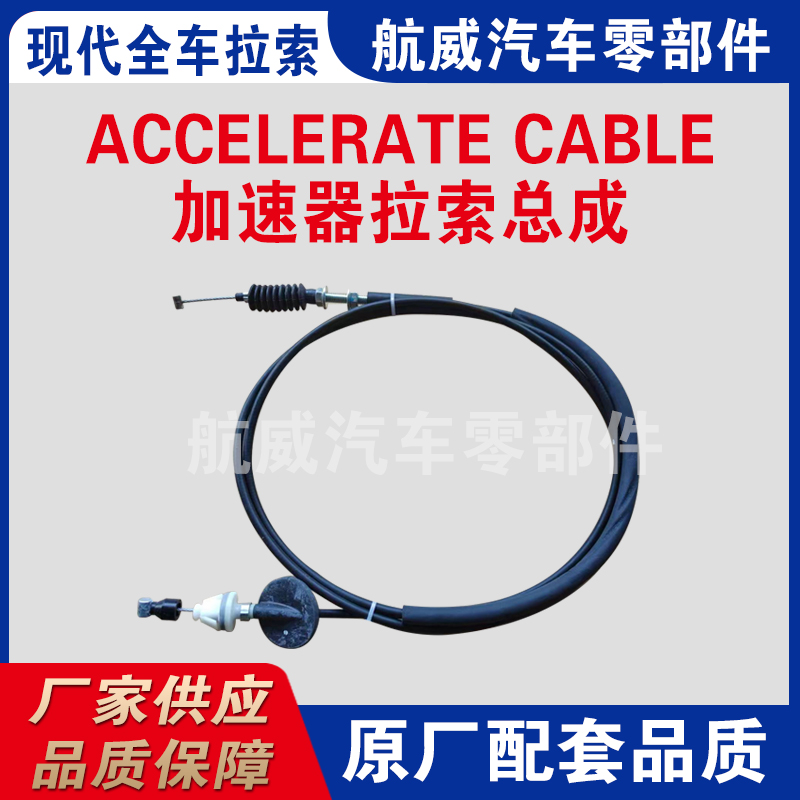Understanding Throttle Cable Functionality and Maintenance Tips for Better Performance
Understanding Throttle Cables Function, Types, and Maintenance
Throttle cables play a critical role in the functioning of various vehicles, including motorcycles, cars, and other types of machinery. Understanding their importance, how they work, and maintenance can enhance your knowledge of vehicle mechanics and help you take better care of your engine.
What is a Throttle Cable?
A throttle cable is a metal wire encased in a flexible sheath that connects the throttle pedal or handle to the engine's throttle body. The primary function of the throttle cable is to control the amount of air or fuel mixture that enters the engine, thereby influencing the engine's power output and speed. When the driver presses the throttle, the cable pulls on the throttle plate, allowing more air to enter the engine, which increases performance.
Types of Throttle Cables
There are primarily two types of throttle cables direct and electronic.
1. Direct Throttle Cables These are traditional cables typically found in older vehicles. They operate mechanically, meaning the driver’s input through the accelerator directly affects how the throttle plate opens. Direct throttle cables are relatively simple and easy to maintain, as they consist of minimal electronic components.
2. Electronic Throttle Control (ETC) Cables In modern vehicles, many manufacturers have switched to electronic throttle control systems. Instead of a physical cable transmitting the driver's command, these systems use sensors to detect the accelerator position and send electronic signals to the engine control unit (ECU). The ECU then adjusts the throttle position accordingly. This system allows for more precision and optimization regarding engine performance and fuel efficiency.
throttle cable

Maintenance of Throttle Cables
Regardless of the type, regular maintenance of throttle cables is crucial for vehicle performance. Here are some tips to ensure your throttle cables remain in good working condition
1. Inspect Regularly Check the throttle cable for any signs of wear, fraying, or damage. This is particularly important in older vehicles or those that experience heavy use.
2. Lubrication For direct throttle cables, lubrication can help ensure smooth operation. Use a suitable lubricant to reduce friction and prevent the cable from getting stuck.
3. Adjustment Over time, throttle cables may stretch, which can affect their response. Regularly check and adjust the cable tension according to the vehicle’s manual. This will help maintain optimal performance.
4. Replacement If you notice any signs of damage or the cable has become stiff, it may be time to replace it. A faulty throttle cable can lead to poor engine performance, reduced efficiency, and, in some cases, safety hazards.
Conclusion
Throttle cables are fundamental components of a vehicle’s operation, directly affecting engine performance and responsiveness. Understanding the types of throttle cables and their maintenance will not only enhance your vehicle's efficiency but also extend its lifespan. Whether you are maintaining a classic car or a modern vehicle with electronic throttle control, keeping an eye on the throttle cable’s condition is essential for safe and effective driving. Regular checks, lubrication, and timely replacements can save you from unnecessary repairs and ensure a smoother driving experience. Remember, a well-maintained throttle cable contributes significantly to your vehicle's overall performance.
-
Upgrade Your Control with Premium Throttle CablesNewsAug.08,2025
-
Stay in Control with Premium Hand Brake CablesNewsAug.08,2025
-
Experience Unmatched Performance with Our Clutch HosesNewsAug.08,2025
-
Ensure Safety and Reliability with Premium Handbrake CablesNewsAug.08,2025
-
Enhance Your Vehicle with High-Performance Clutch LinesNewsAug.08,2025
-
Elevate Your Ride with Premium Gear CablesNewsAug.08,2025
